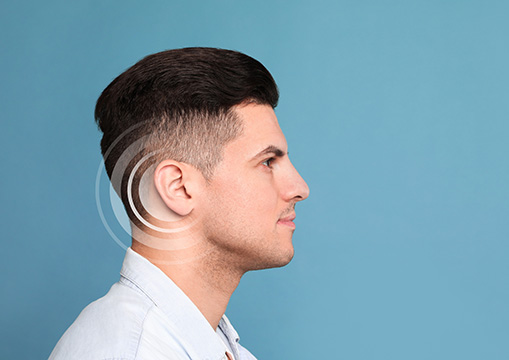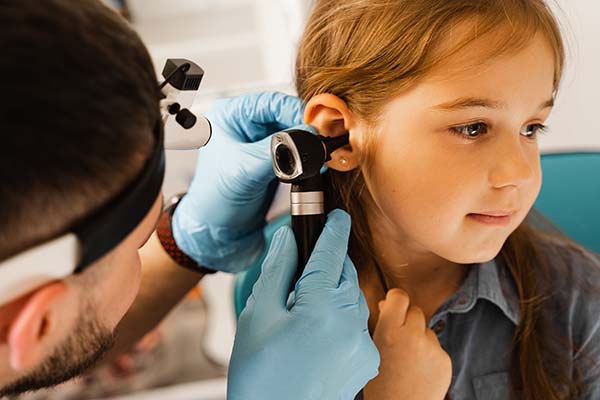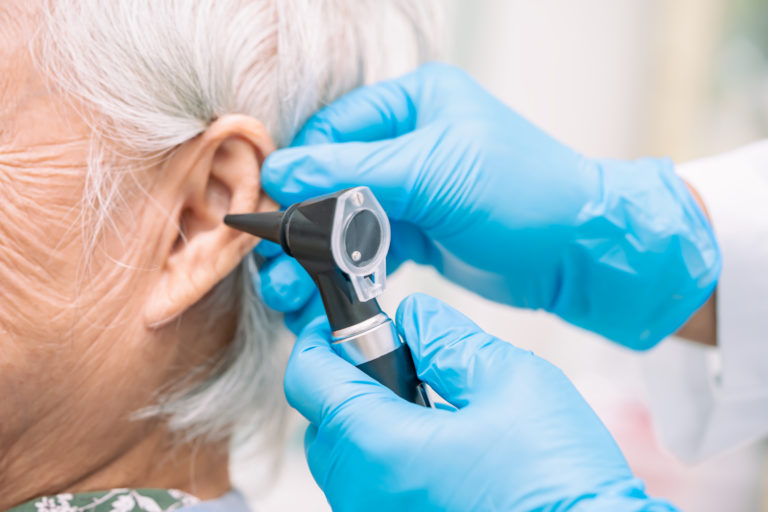Dr Ronald Chin’s Explanation of the Rinne Test
Dr Ronald Chin’s Explanation of the Rinne Test
First, we’ll strike a tuning fork to make it vibrate. Then, we’ll place it on a part of the patient’s skull called the mastoid process. This helps us test something called bone conduction, which means how well sound travels through the bones of the head.
And once they can no longer hear the sound from the tuning fork, the fork is moved near the entrance of their ear canal. This helps us test something called air conduction, which is how well sound travels through the air into the ear.
Now if AC>BC – this is considered a positive Rinne Test result and the patient will be able to hear the fork. This is normal or indicates a type of hearing loss called sensorineural hearing loss.
And if BC>AC – If the patient can hear the sound better through bone conduction than air conduction, we get a negative result. This usually suggests a different type of hearing loss called conductive hearing loss.
Glue ear, after draining the ear drum
Glue ear, intact ear drum
- About the Author
- Latest Posts
Dr Ronald Chin is an Australian trained Otolaryngologist Head and Neck Surgeon.
After graduating as a Fellow of the Royal Australasian College of Surgeons, Dr Chin undertook further specialised training in Head and Neck Cancer at the Royal College of Surgeons in Ireland.
He has published many research papers and is an active teacher and scholar.
As part of his subspecialty training, Dr Chin has training in Laser, Da Vinci Robotic, Flex Robotic and complex surgical techniques.
In addition to specialised Head and Neck Cancer, Dr Chin also enjoys general adult and paediatric ENT Surgery and practices sinus, snoring/sleep and general paediatric ENT Surgical procedures.
Dr Ronald Chin works as a general Otolaryngologist, offering a wide range of surgical and non-surgical treatments including ear surgery, nose surgery and throat surgery. He provides treatment for chronic conditions such as tonsillitis, sinus problems and problems with hearing.
He is also involved in the diagnosis and treatment of many conditions such as facial paralysis, head and neck cancer and sleep apnea. As well as performing surgery on children, he also provides specialist care for adults, including the treatment of throat disorders, voice loss and ear problems.
Dr Chin has also served as a Conjoint Associate Professor at the University of Sydney, a Conjoint Associate Professor at Western Sydney University and an Adjunct Associate Professor at the University of Technology Sydney.








